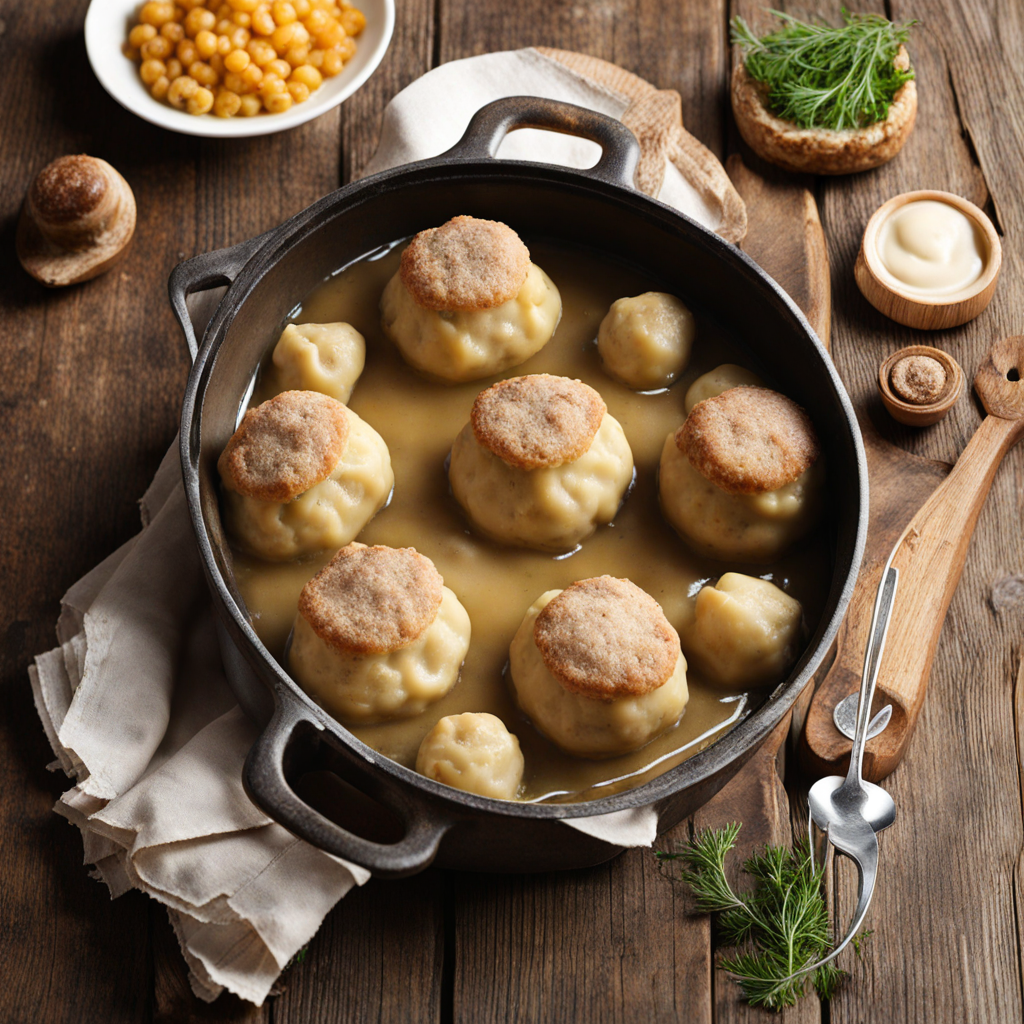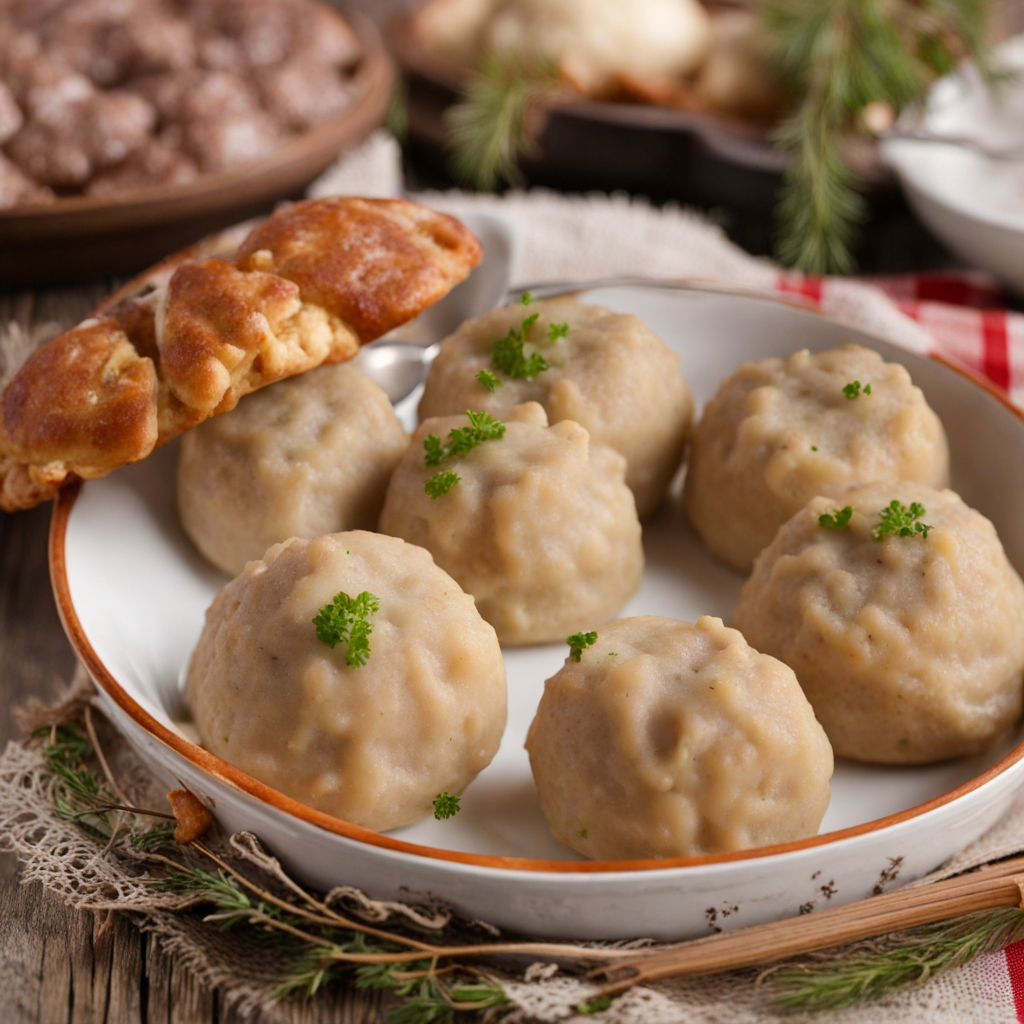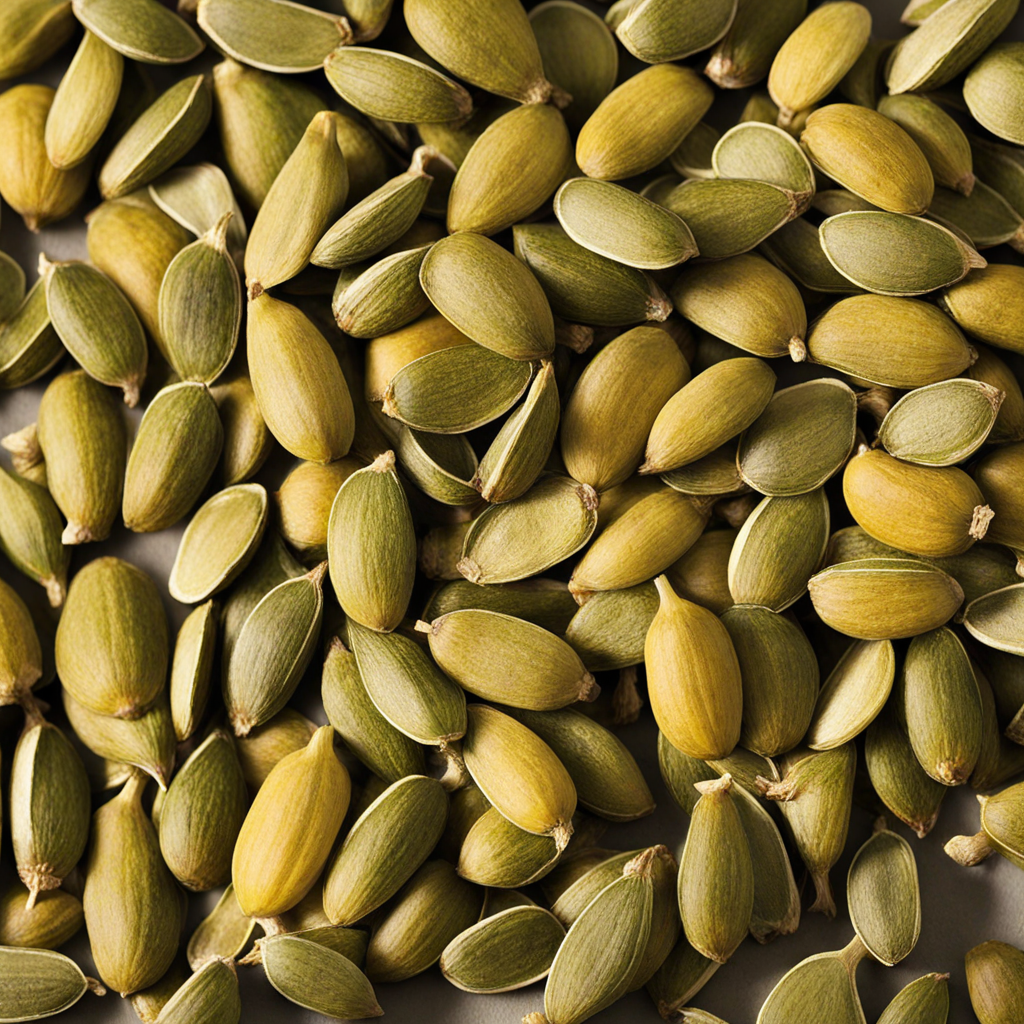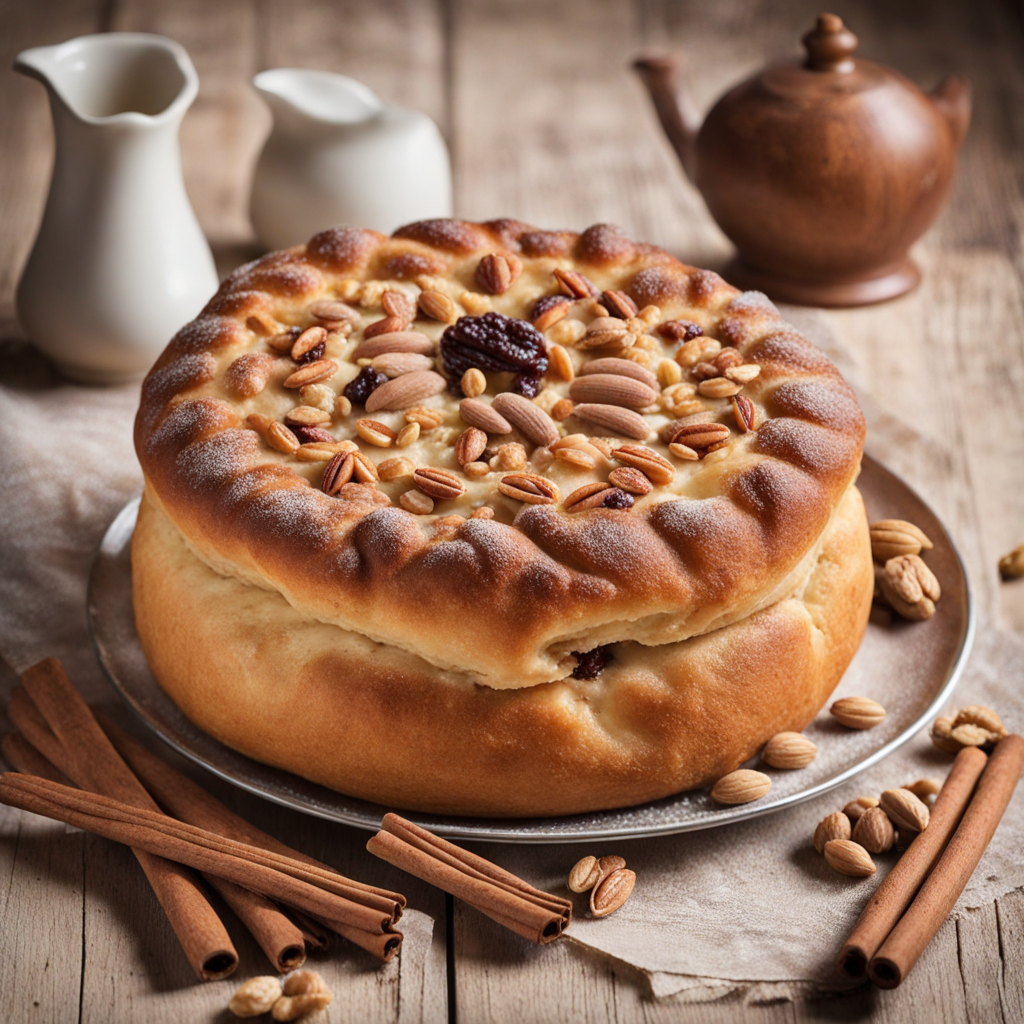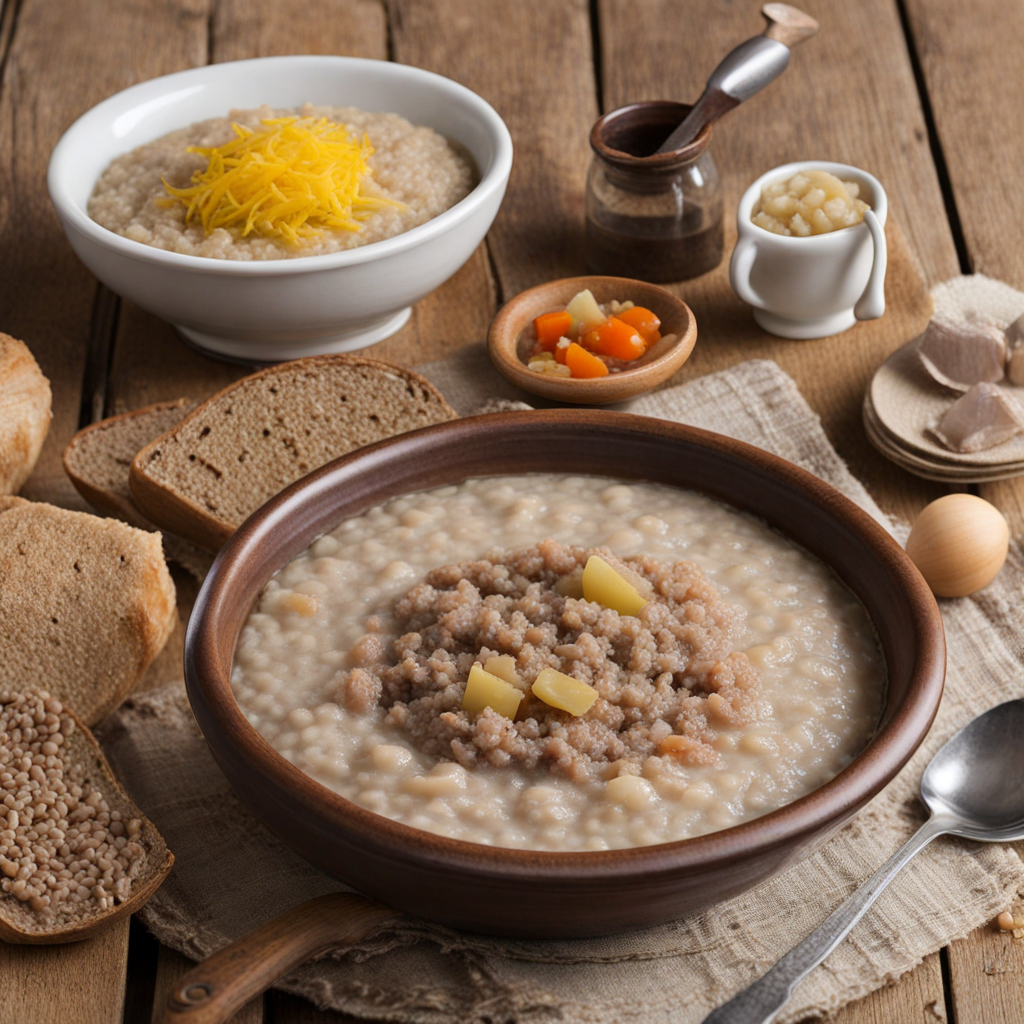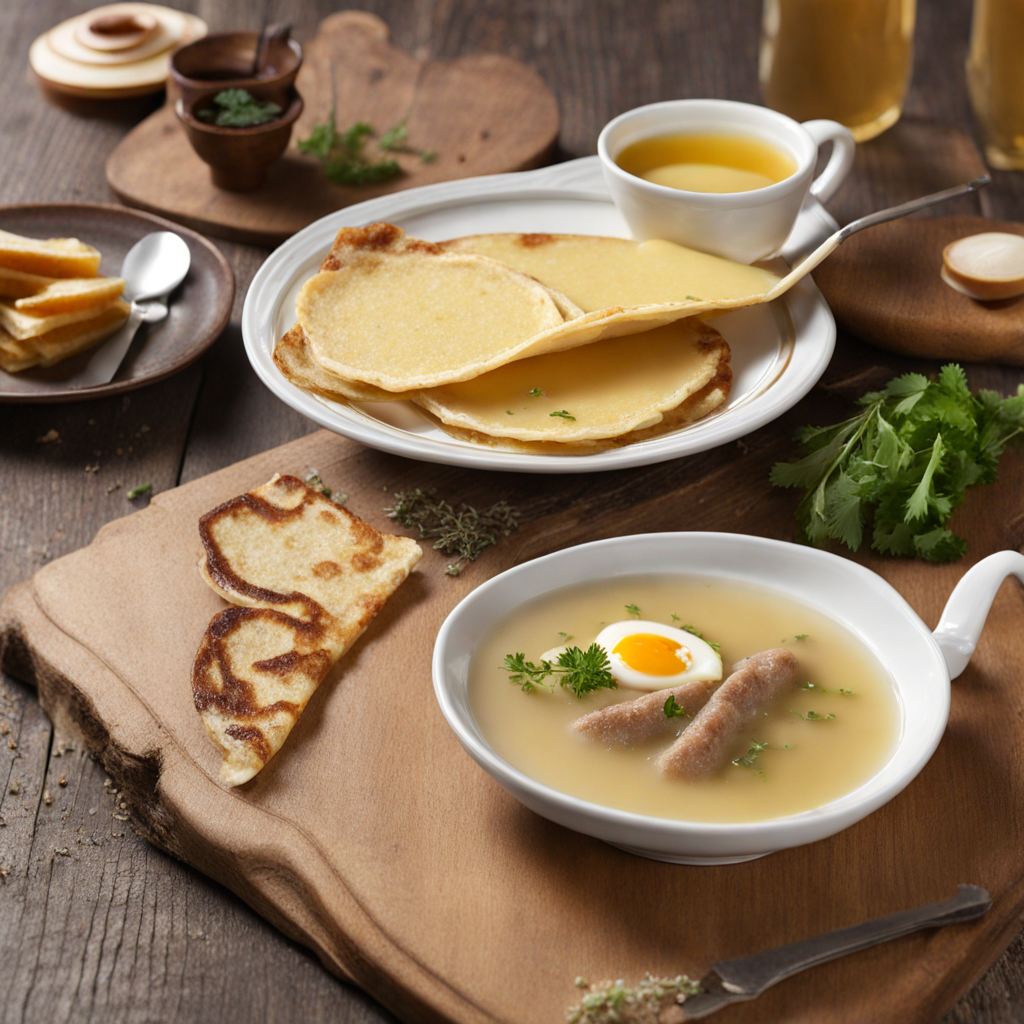Wurstknödel
Wurstknödel is a delightful Austrian dish that beautifully combines the rustic charm of dumplings with the savory flavors of sausage. At its core, Wurstknödel consists of hearty bread dumplings that are enriched with pieces of flavorful sausage, typically a type of local bratwurst or other cured meats. The dumplings are made from a mixture of stale bread, eggs, milk, and flour, creating a soft yet firm texture that perfectly holds the bits of sausage within. The dish is often seasoned with onions, herbs, and spices, adding layers of flavor that transport your taste buds straight to the Austrian countryside. When prepared, Wurstknödel is usually boiled until they puff up, transforming into a comforting, substantial meal. The result is a satisfying dish that can be enjoyed on its own or served alongside a rich gravy or a tangy sauerkraut. The combination of the tender dumpling and savory sausage creates a mouthwatering experience, making it a popular choice in traditional Austrian cuisine. As you take a bite, the contrasting textures and flavors meld together, revealing the heartiness of the bread and the juiciness of the sausage. Wurstknödel is not only a delicious mainstay in Austrian households but also a beloved dish during festive gatherings and cold winter months. It's often paired with a refreshing salad or a side of mustard for an extra zing, appealing to those who appreciate the balance of flavors. Exploring Wurstknödel allows you to indulge in a unique culinary experience that highlights the simplicity and richness of Austrian cooking, making it a must-try for food enthusiasts seeking new and exciting tastes.
How It Became This Dish
The History of Wurstknödel: Austria’s Savory Dumpling Delight #### Origins of Wurstknödel Wurstknödel, a traditional Austrian dish, is a type of dumpling made primarily from bread, meat, and spices. The name itself translates to "sausage dumpling," a fitting description for a dish that embodies both the rustic charm of Austria's culinary heritage and the rich flavors of its regional sausages. The origins of Wurstknödel can be traced back to the necessity of using leftovers, particularly stale bread and remnants of sausages, which were common in rural households. In the early days, these dumplings were not only a practical solution to minimize food waste but also a hearty meal that could sustain laborers through long days of work in the fields. The combination of bread and meat reflects the simplicity and resourcefulness of Austrian cuisine, where every ingredient is cherished and utilized to its fullest potential. #### Cultural Significance Wurstknödel has played a significant role in Austrian culture, particularly in the context of communal dining and festive occasions. Traditionally served as a side dish or main course, they are often accompanied by rich gravies or broths, making them a staple in family gatherings and celebrations. In Austria, where regional variations abound, Wurstknödel can be found on menus during Oktoberfest, Christmas markets, and family feasts, showcasing its versatility and the importance of communal eating in Austrian society. The dish is also tied to the concept of Gemütlichkeit, a German word that encapsulates a sense of coziness and warm-heartedness often associated with social gatherings. Sharing Wurstknödel at a table fosters connections among diners, symbolizing hospitality and the warmth of home-cooked meals. This cultural significance extends beyond the kitchen, as Wurstknödel has become emblematic of Austria's rich culinary landscape. #### Development Over Time As Austria's culinary scene evolved, so too did Wurstknödel. The dish has seen various adaptations, influenced by regional ingredients, local traditions, and culinary trends. In the Tyrol region, for instance, Wurstknödel might include speck (cured pork) and be seasoned with herbs unique to the alpine environment, while in the eastern regions, the dumplings may lean heavily on the use of paprika and a variety of flavorful sausages. The Industrial Revolution of the 19th century marked a significant shift in food production and consumption patterns across Europe, including Austria. With the rise of urban centers and the decline of agrarian lifestyles, Wurstknödel began to transition from a purely peasant food to a dish appreciated in urban dining establishments. As the middle class grew, so did the demand for hearty, comforting dishes that represented a connection to the pastoral past. The post-World War II era brought about further changes. As Austria rebuilt itself, traditional foods like Wurstknödel experienced a renaissance, celebrated in restaurants and homes alike. The kitchen became a place of comfort amid the tumultuous changes of the time. Chefs began experimenting with the dumpling, introducing new flavors and techniques while honoring the classic recipe. This era saw Wurstknödel moving from a simple dish to one that could be found in gourmet restaurants, showcasing the culinary sophistication of Austrian chefs. #### Ingredients and Preparation The classic preparation of Wurstknödel typically involves stale bread, milk, eggs, and finely chopped meat, which can include various types of sausages such as bratwurst or other regional specialties. The ingredients are combined and seasoned with spices like nutmeg, pepper, and parsley, reflecting the flavors of the specific region. The mixture is shaped into balls and then boiled or steamed until cooked through. Regional variations may incorporate additional ingredients, such as cheese or vegetables, creating a unique twist on the traditional recipe. For instance, in some areas, local cheeses are blended into the dumpling mixture, adding a creamy texture and rich flavor. One of the most beloved methods of serving Wurstknödel is in a flavorful broth, where the dumplings absorb the rich essence of the soup. Some regions also serve them with a rich gravy, often made from the drippings of roasted meats, which enhances both the flavor and the overall dining experience. #### Modern Interpretations In recent years, Wurstknödel has enjoyed a revival, with younger generations of chefs and home cooks reimagining this traditional dish. The farm-to-table movement has encouraged a return to local sourcing of ingredients, and many chefs are now focused on highlighting seasonal produce and artisanal meats in their Wurstknödel preparations. The emphasis on quality ingredients has led to a renewed appreciation for this humble dish, elevating it to new culinary heights. Moreover, the global interest in Austrian cuisine has led to the introduction of Wurstknödel beyond Austria's borders. Many Austrian restaurants worldwide feature this dish, allowing international diners to experience a taste of Austria’s rich culinary heritage. Food festivals and cultural exchanges have also contributed to its popularity, celebrating the dish as a symbol of Austrian identity. #### Conclusion Wurstknödel is more than just a dumpling; it is a delicious testament to Austria's culinary history, reflecting the resourcefulness of its people and the significance of communal dining. From its humble beginnings as a peasant dish to its modern interpretations in gourmet kitchens, Wurstknödel has demonstrated remarkable resilience and adaptability. As it continues to evolve, this savory dumpling remains a cherished part of Austria’s culinary landscape, inviting future generations to partake in its rich heritage and flavors. Whether enjoyed at a festive gathering or a cozy family dinner, Wurstknödel embodies the warmth, hospitality, and love that define Austrian culture.
You may like
Discover local flavors from Austria


